-
 Bitcoin
Bitcoin $101,898.5005
-0.75% -
 Ethereum
Ethereum $2,258.1125
-1.07% -
 Tether USDt
Tether USDt $1.0004
0.01% -
 XRP
XRP $2.0178
-2.93% -
 BNB
BNB $624.0243
-1.53% -
 Solana
Solana $134.3298
-0.90% -
 USDC
USDC $0.9999
0.01% -
 TRON
TRON $0.2675
-2.05% -
 Dogecoin
Dogecoin $0.1538
-1.96% -
 Cardano
Cardano $0.5482
-1.11% -
 Hyperliquid
Hyperliquid $35.5636
5.45% -
 Bitcoin Cash
Bitcoin Cash $453.4902
-1.66% -
 Sui
Sui $2.5134
-2.97% -
 UNUS SED LEO
UNUS SED LEO $9.1292
1.77% -
 Chainlink
Chainlink $11.8457
-1.60% -
 Stellar
Stellar $0.2312
-2.73% -
 Avalanche
Avalanche $16.9721
0.29% -
 Toncoin
Toncoin $2.7549
-3.82% -
 Shiba Inu
Shiba Inu $0.0...01081
-1.10% -
 Litecoin
Litecoin $80.8250
-0.71% -
 Hedera
Hedera $0.1374
0.21% -
 Monero
Monero $305.4827
-2.36% -
 Ethena USDe
Ethena USDe $1.0006
0.00% -
 Dai
Dai $1.0000
-0.01% -
 Polkadot
Polkadot $3.2085
-3.12% -
 Bitget Token
Bitget Token $4.0845
-3.13% -
 Uniswap
Uniswap $6.3353
-1.63% -
 Pi
Pi $0.5085
-0.70% -
 Pepe
Pepe $0.0...08913
-3.82% -
 Aave
Aave $232.7090
-0.58%
Is the island reversal of MFI reliable? How to confirm the island reversal pattern?
The MFI's island reversal pattern signals potential trend reversals, but traders must confirm it using volume, other indicators, and price action for reliability.
May 24, 2025 at 12:15 am
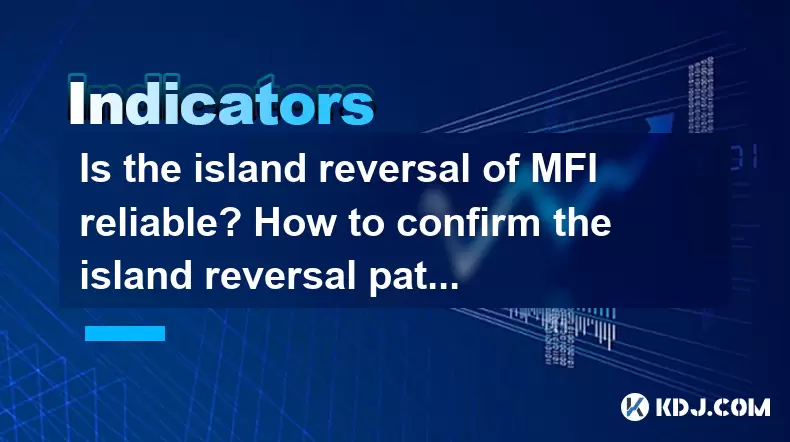
The Money Flow Index (MFI) is a momentum indicator that measures the inflow and outflow of money into a security over a specific period. An island reversal pattern within the MFI can be a significant signal for traders, indicating potential trend reversals. However, the reliability of this pattern and the methods to confirm it are crucial aspects that traders need to understand thoroughly.
Understanding the Island Reversal Pattern
An island reversal is a chart pattern that occurs when a price gap separates a cluster of candlesticks from the rest of the chart. This pattern is significant because it often indicates a strong reversal in the current trend. When observed in the context of the MFI, an island reversal suggests a shift in the momentum of money flow, which can be a precursor to a price reversal.
The island reversal pattern on the MFI chart typically consists of three phases:
- Preceding Trend: The MFI shows a clear trend, either upward or downward.
- Island Formation: A gap occurs, followed by a small number of candlesticks (usually one to three) that form an "island."
- Final Gap: Another gap in the opposite direction isolates the island from the subsequent price action.
Reliability of the Island Reversal Pattern in MFI
The reliability of the island reversal pattern in the MFI depends on several factors. Volume plays a crucial role; a high volume during the formation of the island and the gaps can enhance the reliability of the pattern. Additionally, the duration of the preceding trend and the context within which the pattern appears are important considerations.
For instance, if the MFI has been in a strong downtrend and an island reversal pattern forms near oversold levels, the reliability of the signal increases. Conversely, if the pattern appears in a sideways market, its significance might be reduced. Confirmation from other technical indicators can also bolster the reliability of the pattern.
Confirming the Island Reversal Pattern
To confirm an island reversal pattern in the MFI, traders should follow a systematic approach. Here are the steps to confirm the pattern:
Identify the Pattern: Look for a clear island reversal pattern on the MFI chart. Ensure that the gaps on either side of the island are significant and that the island itself consists of a small number of candlesticks.
Check Volume: Verify that the volume during the formation of the island and the gaps is higher than average. High volume can confirm the strength of the reversal signal.
Use Other Indicators: Cross-reference the island reversal pattern with other technical indicators such as the Relative Strength Index (RSI), Moving Averages, or the MACD. If these indicators also suggest a trend reversal, the reliability of the MFI island reversal increases.
Price Action Confirmation: Look for corresponding price action that supports the MFI island reversal. If the price also forms an island reversal pattern, the signal becomes more robust.
Time Frame Analysis: Analyze the pattern across different time frames. A pattern that appears on multiple time frames (e.g., daily and weekly charts) is more reliable than one that appears on a single time frame.
Practical Example of Confirming an Island Reversal in MFI
Let's consider a practical example to illustrate how to confirm an island reversal pattern in the MFI:
Step 1: Identify the Pattern: On a daily MFI chart of Bitcoin, you notice a downtrend followed by a gap down, a single candlestick forming an island, and another gap up, isolating the island.
Step 2: Check Volume: You observe that the volume during the gap down and gap up is significantly higher than the average volume over the past month.
Step 3: Use Other Indicators: The RSI, which was in oversold territory during the island formation, starts to rise, indicating a potential reversal. The MACD also shows a bullish crossover around the same time.
Step 4: Price Action Confirmation: The price chart of Bitcoin also shows an island reversal pattern, with a gap down, a single candlestick, and a gap up, aligning with the MFI pattern.
Step 5: Time Frame Analysis: You check the weekly chart and find that a similar island reversal pattern is forming on the MFI, reinforcing the signal.
Common Pitfalls and Considerations
While the island reversal pattern in the MFI can be a powerful tool, there are common pitfalls that traders should be aware of. False signals can occur, especially in volatile markets. Therefore, it's essential to use multiple confirmations and not rely solely on the MFI island reversal.
Additionally, market context is crucial. An island reversal in a strong trend might be more reliable than one in a choppy market. Traders should also consider risk management strategies, such as setting stop-loss orders, to mitigate potential losses if the pattern fails.
Using Island Reversal in Trading Strategies
Incorporating the island reversal pattern in the MFI into trading strategies requires a balanced approach. Traders can use this pattern to identify potential entry and exit points. For instance, if an island reversal pattern forms after a prolonged downtrend and is confirmed by other indicators, it might be a good time to enter a long position.
Conversely, if the pattern forms after a strong uptrend and is confirmed, it could be a signal to exit a long position or enter a short position. Position sizing and risk management are critical components of any trading strategy that utilizes technical patterns like the island reversal.
Frequently Asked Questions
Q1: Can the island reversal pattern in the MFI be used for all cryptocurrencies?
A1: While the island reversal pattern in the MFI can be applied to various cryptocurrencies, its reliability may vary depending on the liquidity and volatility of the specific cryptocurrency. More liquid and less volatile assets tend to produce more reliable signals.
Q2: How often does the island reversal pattern occur in the MFI?
A2: The frequency of the island reversal pattern in the MFI depends on market conditions. In highly volatile markets, these patterns might occur more frequently, but their reliability could be lower. In more stable markets, the patterns might be rarer but potentially more significant.
Q3: Is it necessary to use multiple time frames when analyzing the island reversal pattern in the MFI?
A3: While not strictly necessary, using multiple time frames can enhance the reliability of the island reversal pattern. Confirming the pattern across different time frames provides a more comprehensive view of the market sentiment and can help avoid false signals.
Q4: Can the island reversal pattern in the MFI be used in conjunction with fundamental analysis?
A4: Yes, combining technical analysis, such as the island reversal pattern in the MFI, with fundamental analysis can provide a more holistic view of the market. Fundamental factors like news events, project developments, and market sentiment can influence the reliability and timing of technical patterns.
Disclaimer:info@kdj.com
The information provided is not trading advice. kdj.com does not assume any responsibility for any investments made based on the information provided in this article. Cryptocurrencies are highly volatile and it is highly recommended that you invest with caution after thorough research!
If you believe that the content used on this website infringes your copyright, please contact us immediately (info@kdj.com) and we will delete it promptly.
- BNB Price Check: Stablecoin Surge vs. Prediction Rollercoaster
- 2025-06-23 14:25:12
- Metaplanet's Bitcoin Bonanza: Holdings Skyrocket Amidst Market Swings
- 2025-06-23 14:25:12
- Global Meltdown, Investors, and Safe Havens: Navigating the Storm
- 2025-06-23 14:30:12
- NFT Sales Snapshot: Guild of Heroes, Polygon, and the Market's Shifting Sands
- 2025-06-23 15:25:12
- AVAX Support Holds, Eyes Potential Surge: What's Next?
- 2025-06-23 15:11:16
- Cointelegraph Under Fire: Exploits, Phishing, and the Crypto Media Minefield
- 2025-06-23 15:11:16
Related knowledge

How to read the sideways consolidation after the bottom volume and long positive line?
Jun 23,2025 at 02:28pm
Understanding the Sideways ConsolidationWhen analyzing cryptocurrency charts, sidewards consolidation refers to a phase where prices move within a narrow range without a clear upward or downward trend. This pattern often appears after significant price movements, such as a sharp increase followed by a period of equilibrium between buyers and sellers. In...
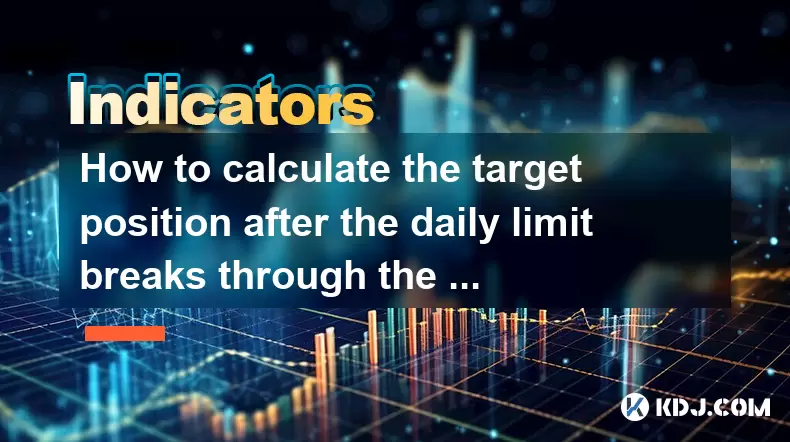
How to calculate the target position after the daily limit breaks through the previous high?
Jun 23,2025 at 02:57pm
Understanding the Daily Limit BreakthroughIn cryptocurrency trading, a daily limit typically refers to the maximum price movement allowed within a single trading day on certain exchanges. When this limit is breached, especially when it surpasses the previous high, traders often seek to calculate the target position or expected price movement following s...
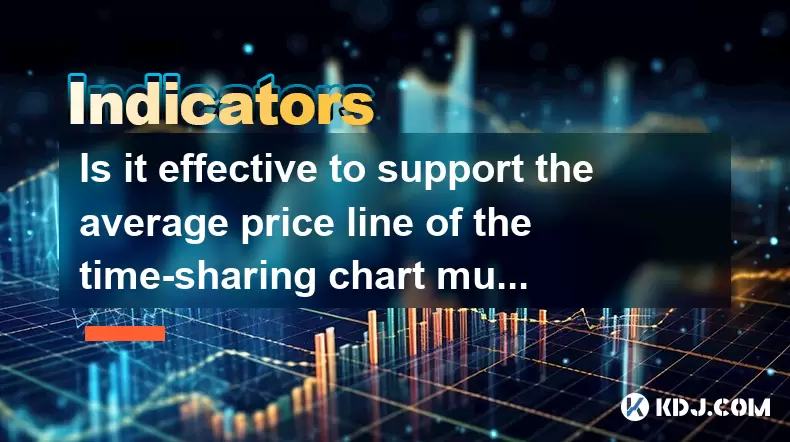
Is it effective to support the average price line of the time-sharing chart multiple times?
Jun 23,2025 at 01:36pm
Understanding the Average Price Line in Time-Sharing ChartsIn cryptocurrency trading, time-sharing charts refer to real-time price charts that display price movements over short intervals, often within a single trading day. Within these charts, the average price line, also known as the Volume Weighted Average Price (VWAP), is a commonly used technical i...
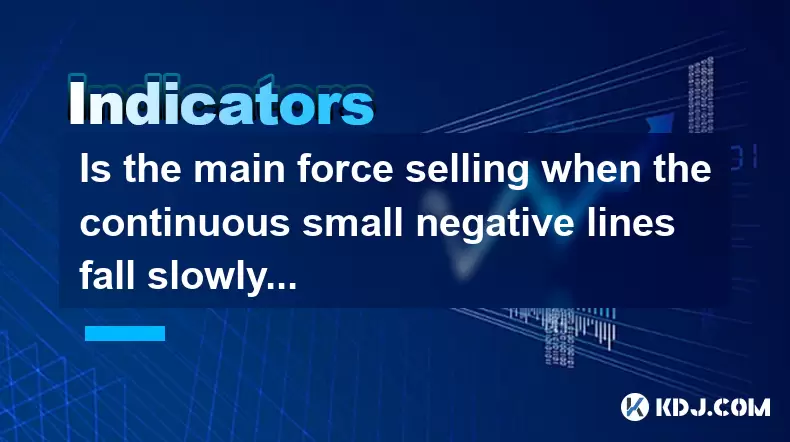
Is the main force selling when the continuous small negative lines fall slowly?
Jun 23,2025 at 03:35pm
Understanding Continuous Small Negative Lines in Cryptocurrency ChartsIn cryptocurrency trading, continuous small negative lines refer to a pattern where the price of an asset declines gradually over time with small bearish candlesticks. These candlesticks typically have short bodies and may or may not have wicks. This pattern often appears during perio...
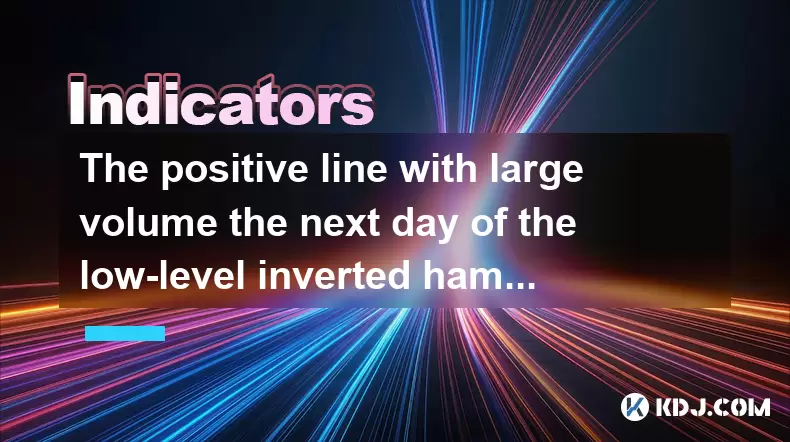
The positive line with large volume the next day of the low-level inverted hammer line confirms the reversal?
Jun 23,2025 at 01:21pm
Understanding the Low-Level Inverted Hammer LineThe inverted hammer line is a single candlestick pattern that typically appears at the end of a downtrend. It has a small real body near the bottom of the trading range and a long upper shadow, indicating that bulls attempted to push prices higher but were met with selling pressure. When this pattern forms...
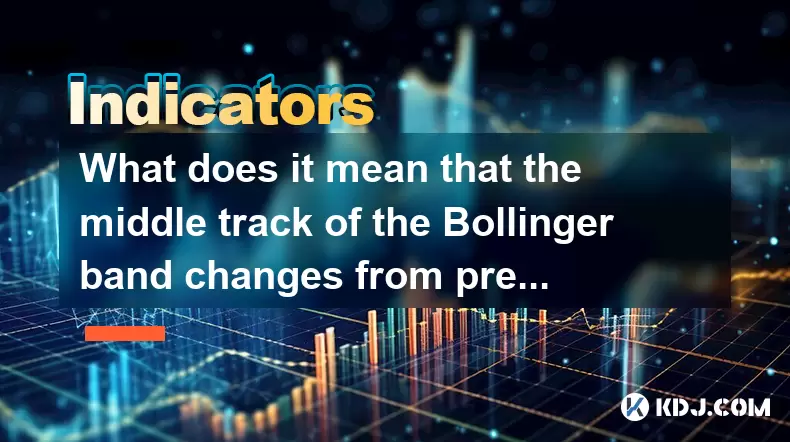
What does it mean that the middle track of the Bollinger band changes from pressure to support?
Jun 23,2025 at 03:01pm
Understanding the Bollinger Band StructureThe Bollinger Bands are a technical analysis tool used in cryptocurrency trading, developed by John Bollinger. They consist of three lines: a simple moving average (SMA) in the middle and two standard deviation bands above and below it. The middle track is typically set at 20 periods and serves as a baseline for...

How to read the sideways consolidation after the bottom volume and long positive line?
Jun 23,2025 at 02:28pm
Understanding the Sideways ConsolidationWhen analyzing cryptocurrency charts, sidewards consolidation refers to a phase where prices move within a narrow range without a clear upward or downward trend. This pattern often appears after significant price movements, such as a sharp increase followed by a period of equilibrium between buyers and sellers. In...

How to calculate the target position after the daily limit breaks through the previous high?
Jun 23,2025 at 02:57pm
Understanding the Daily Limit BreakthroughIn cryptocurrency trading, a daily limit typically refers to the maximum price movement allowed within a single trading day on certain exchanges. When this limit is breached, especially when it surpasses the previous high, traders often seek to calculate the target position or expected price movement following s...

Is it effective to support the average price line of the time-sharing chart multiple times?
Jun 23,2025 at 01:36pm
Understanding the Average Price Line in Time-Sharing ChartsIn cryptocurrency trading, time-sharing charts refer to real-time price charts that display price movements over short intervals, often within a single trading day. Within these charts, the average price line, also known as the Volume Weighted Average Price (VWAP), is a commonly used technical i...

Is the main force selling when the continuous small negative lines fall slowly?
Jun 23,2025 at 03:35pm
Understanding Continuous Small Negative Lines in Cryptocurrency ChartsIn cryptocurrency trading, continuous small negative lines refer to a pattern where the price of an asset declines gradually over time with small bearish candlesticks. These candlesticks typically have short bodies and may or may not have wicks. This pattern often appears during perio...

The positive line with large volume the next day of the low-level inverted hammer line confirms the reversal?
Jun 23,2025 at 01:21pm
Understanding the Low-Level Inverted Hammer LineThe inverted hammer line is a single candlestick pattern that typically appears at the end of a downtrend. It has a small real body near the bottom of the trading range and a long upper shadow, indicating that bulls attempted to push prices higher but were met with selling pressure. When this pattern forms...

What does it mean that the middle track of the Bollinger band changes from pressure to support?
Jun 23,2025 at 03:01pm
Understanding the Bollinger Band StructureThe Bollinger Bands are a technical analysis tool used in cryptocurrency trading, developed by John Bollinger. They consist of three lines: a simple moving average (SMA) in the middle and two standard deviation bands above and below it. The middle track is typically set at 20 periods and serves as a baseline for...
See all articles
























































































